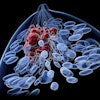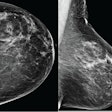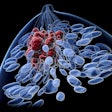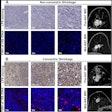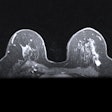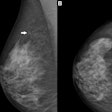Monday, December 1 | 3:10 p.m.-3:20 p.m. | SSE02-02 | Room E450A
Digital breast tomosynthesis shows promise for preoperatively identifying additional lesions in women newly diagnosed with breast cancer, according to this Monday afternoon presentation.Contrast-enhanced MR is highly sensitive for detecting invasive breast cancer, but it has low specificity, which can lead to unnecessary biopsies, according to study presenter Dr. Mary Yamashita, from Keck Medicine of the University of Southern California, and colleagues. Yamashita's team compared tomosynthesis and contrast-enhanced MR for finding additional cancers as an adjunct to standard digital mammography.
The study included 29 women diagnosed with breast cancer who had tomosynthesis as part of their screening study or diagnostic workup between September 2012 and January 2014. All of the women also had a contrast-enhanced MR exam before any surgery or other treatment. Ten additional negative digital mammography plus tomosynthesis studies were added to the case batch as controls.
Three radiologist readers interpreted each study in three categories: digital mammography alone, digital mammography plus tomosynthesis, and digital mammography, tomosynthesis, and clinical history data. Yamashita's team also performed a retrospective analysis of the contrast-enhanced MR results.
There were 36 cancers and 12 benign findings among the 29 women. Contrast-enhanced MR found all 36 cancers but falsely identified eight of the 12 benign lesions as suspicious. Digital mammography alone identified 23 of the 36 cancers, for sensitivity of 64%, and it excluded all of the benign lesions, for a 100% specificity rate.
Digital mammography plus tomosynthesis found 27 of 36 cancers, for a 75% sensitivity rate, and it also excluded all of the benign lesions. When clinical history was added to the mammography/tomosynthesis combination, 32 of 36 cancers were identified, for a sensitivity rate of 89%, and 10 of 12 benign lesions were correctly characterized, for a specificity rate of 83%.
The findings suggest that tomosynthesis could be a viable alternative for evaluating additional cancers in newly diagnosed breast cancer patients, but further investigation -- with a larger cohort -- is needed, Yamashita's group concluded.



